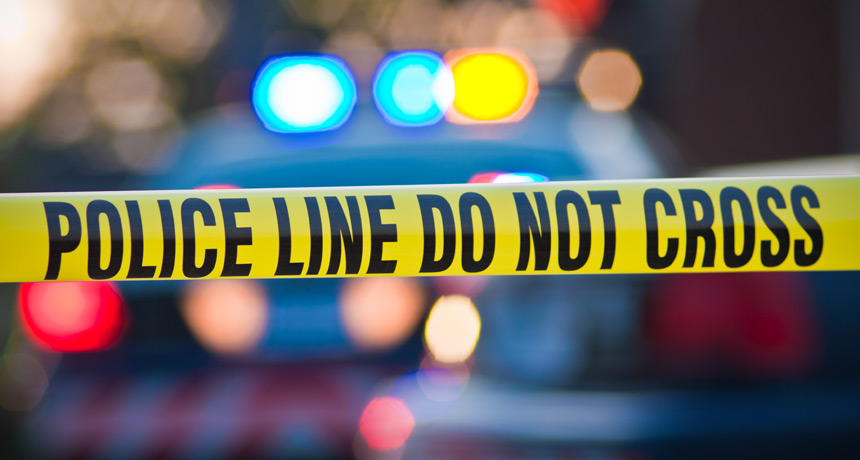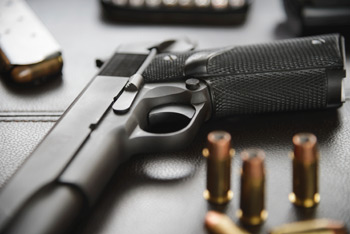Strict gun laws ended mass shootings in Australia
Reduction in semiautomatic weapons likely a key factor, study concludes

Each year, a disturbingly large number of “mass shootings” occur. An Australian study finds that restricting access to certain types of weapons may cut the incidence of such carnage.
carlballou/ iStockphoto
By Meghan Rosen
Twenty years ago, Australia passed strict laws to control what types of guns people could own. The country also required people to sell to the government any guns that were made illegal. Since then, Australia has seen zero mass shootings, a new study finds.
Researchers reported those findings June 22 in the Journal of the American Medical Association.
Daniel Webster is a health policy researcher at Johns Hopkins University in Baltimore, Md. He wrote an editorial that was published along with the new study. Key to the laws’ success, he suspects, was a sharp reduction in public exposure to semiautomatic weapons. (These are weapons that fire each time their triggers are pulled, and then automatically reload).
“Here’s a society that recognized a public safety threat, found it unacceptable and took measures to address the problem,” Webster says.
The data from Australia are potentially valuable for understanding what effects gun-control laws might have elsewhere. In the United States, for instance, there have been a number of high-profile mass casualties. Among the most recent: the June 12 shooting that killed dozens of people in Orlando, Fla.
In fact, gun violence in the United States has become fairly common, according to the Gun Violence Archive, a nonprofit group that tracks such incidents. As of July 1, it had logged 163 mass shootings in 2016. Mass shooting tracker pegged the number at 208 for the same period. Its numbers for June alone included 97 deaths and 213 injuries.
Such events have made people question which gun-control laws, if any, have cut gun violence.
To date, there hasn’t been enough evidence to make strong conclusions about most U.S. laws. David Hemenway is a health policy researcher at Harvard University in Cambridge, Mass. He says one reason the effectiveness of U.S. gun laws is hard to pin down is that the laws typically aren’t very strong.

The laws banned semiautomatic long guns. These include the guns used by the Port Arthur shooter. The new agreement made buying other guns a lot harder too. People have to show a “genuine need” for a weapon that they want to buy. They must pass a safety test, show good moral character and wait at least 28 days. They also cannot have any restraining orders for violence, among other restrictions, Webster notes.
“In Australia, they look at someone’s full record and ask, ‘Is this a good idea to let this person have a firearm?’” Webster says. In the United States, he notes, “we do pretty much the opposite. The burden is on the government to show that you are too dangerous to have a firearm.”
Australia also started a mandatory gun-buyback program in 1996. Through that program, the government bought and destroyed more than 650,000 firearms.
Simon Chapman at Australia’s University of Sydney led the new study. He and his colleagues counted mass shootings before and after the National Firearms Agreement. They also analyzed 35 years of data about deaths in the country. Those data came from the Australian Bureau of Statistics.
From 1979 to 1996, Australia had 13 fatal mass shootings, Chapman’s team reports. The researchers counted an event as a mass shooting if it involved five or more victims (not including the shooter). From 1997 to May 2016, the country has had none. (Three shootings, though, have killed three or four victims.) Chapman’s team also found that the rate of gun deaths dropped rapidly after 1996. But the researchers can’t confirm that this reduction is due to the gun laws.
Power Words
(for more about Power Words, click here)
gun control A term that refers to government laws or regulations that limit the sale, ownership, possession or use of certain kinds of firearms.
long guns A term for rifles, shotguns or other guns that usually must be braced by the body or some other structure to fire accurately.
mass shooting A single episode of gun violence in which at least several people (not including the shooter or shooters) are injured or killed.
moral A code of behavior that aspires to do what’s right (not wrong) and to treat others as you would hope they would treat you.
restraining order A temporary court order that attempts to protect a person or organization. The order restrains — prohibits — someone’s common or planned behavior, based on past threatening behavior. The order usually instructs someone that they may not come near a particular person or place.
rifle A gun with a long barrel that is spirally grooved on the inside. This makes the bullet spin as it is fired, giving it high accuracy over a long distance.
semiautomatic weapon A firearm that fires one round, or bullet, each time the person holding it pulls the trigger. It automatically reloads between shots.







